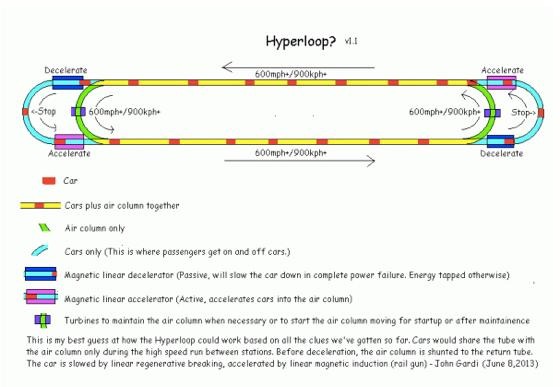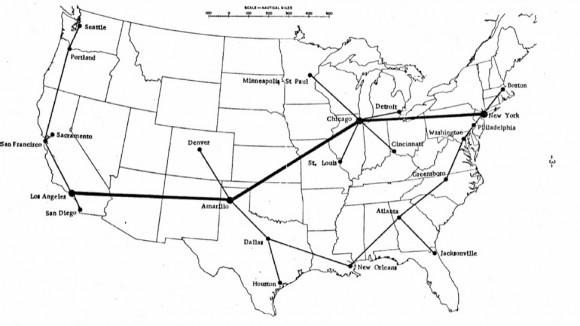Hyperloop: Great On Paper, But Is It Practical?
Elon Musk's next big idea has been making the rounds lately. It's actually an idea that's been around for a while, but it's just now gaining some real steam across the internet, mostly thanks to an announcement by Musk that he would be unveiling plans for the Hyperloop system by August 12, leaving us waiting in anticipation. While the idea sounds really cool and it makes sense on paper, is Hyperloop something that can realistically happen?
A quick primer on the basic idea of Hyperloop: It would essentially consist of a network of tubes spanning across the US, and capsules would be shot through these tubes at tremendous speeds (similar to how the capsule and tube system works at your local drive-thru bank). These capsules would be able to fit 6-8 people at a time, leaving room for luggage as well. Musk calls the Hyperloop system "a cross between a Concorde, a rail gun, and an air hockey table."
How fast would these capsules be able to travel? The theoretical speed we're talking about is somewhere around 4,000 mph, and this would be possible using Maglev technology that is currently used on bullet trains that allows them to travel at over 350 mph. However, since the tubes will be vacuumed and airless, the capsules will be able to travel at much higher speeds, similar to how a spacecraft can zoom through space at ridiculous speeds, thanks to the lack of air friction.
On top of that, Musk has said that the entire system would be incredibly low-powered, and it could run off of solar panels placed above the tubes, leaving energy costs at a minimum. Based on the speed that these capsules could travel at, a 2,500-mile trip from New York to Los Angeles would take only 30-45 minutes — a trip that normally takes 5-6 hours by commercial plane. People have been sketching out what a Hyperloop system would look like, and Elon Musk has pointed out a sketch that's the closest anyone has gotten so far:

Another sketch shows the possible network of Hyperloop tubes stretched out across the US, with main hubs in New York, Chicago, Amarillo (in Texas), and Los Angeles. Then, each of these hubs would have separate branches extending out that could take passengers to surrounding cities. For instance, you could stop at the Chicago hub and get on another capsule that would take you to either Minneapolis, Detroit, Cincinnati, or St. Louis.

Plus, since the energy costs of Hyperloop would be so low, Musk says that a trip from New York to Los Angeles in one of the capsules would cost much less than an airline ticket. It also wouldn't experience delays due to weather, since the tube system would be able to withstand most forms of bad weather. We'll see how robust the system will be, but we wouldn't be surprised if a tornado or hurricane caused a bit of damage.
This all sounds quite amazing, and it seems to work on paper, but is it practical and realistic? The US is having a hard time as it is just to bring high-speed rail into the country, mostly because the US doesn't have the money and infrastructure for such a big project, and Hyperloop would cost just as much as (possibly even more than) a high-speed rail network.
However, if Musk ended up funding the project himself, this could be something that may actually get built, but it would also have to get approval from the government, and who knows how long that would take.
Check out our other recent coverage below for more on Elon Musk's latest happenings.
